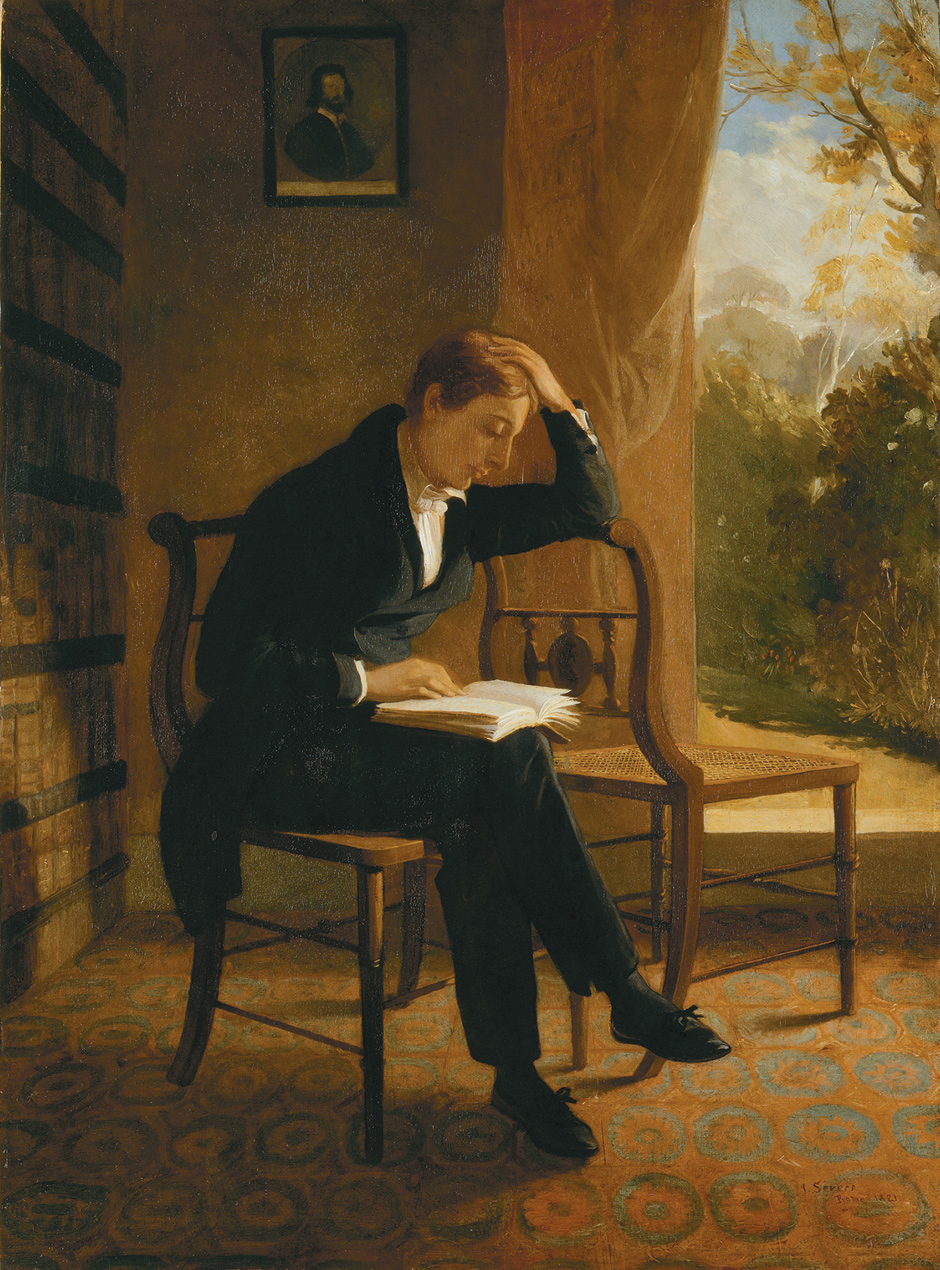"On First Looking into Chapman's Homer" is a sonnet written by John Keats when he was just 20 years old. Essentially, it is a poem about poetry itself, describing a reading experience so profound that an entire world seems to come to life.
Thursday, 20 June 2024
Tuesday, 22 November 2022
LA BELLE DAME SANS MERCI ~ 5^C LINGUISTICO
O what can ail thee, knight-at-arms,
Alone and palely loitering?
The sedge has withered from the lake,
And no birds sing.
O what can ail thee, knight-at-arms,
So haggard and so woe-begone?
The squirrel’s granary is full,
And the harvest’s done.
I see a lily on thy brow,
With anguish moist and fever-dew,
And on thy cheeks a fading rose
Fast withereth too.
I met a lady in the meads,
Full beautiful—a faery’s child,
Her hair was long, her foot was light,
And her eyes were wild.
I made a garland for her head,
And bracelets too, and fragrant zone;
She looked at me as she did love,
And made sweet moan
I set her on my pacing steed,
And nothing else saw all day long,
For sidelong would she bend, and sing
A faery’s song.
She found me roots of relish sweet,
And honey wild, and manna-dew,
And sure in language strange she said—
‘I love thee true’.
She took me to her Elfin grot,
And there she wept and sighed full sore,
And there I shut her wild wild eyes
With kisses four.
And there she lulled me asleep,
And there I dreamed—Ah! woe betide!—
The latest dream I ever dreamt
On the cold hill side.
I saw pale kings and princes too,
Pale warriors, death-pale were they all;
They cried—‘La Belle Dame sans Merci
Thee hath in thrall!’
I saw their starved lips in the gloam,
With horrid warning gaped wide,
And I awoke and found me here,
On the cold hill’s side.
And this is why I sojourn here,
Alone and palely loitering,
Though the sedge is withered from the lake,
And no birds sing.
John Keats Here you can find an analysis of this handsome ballad which is considered an English classic. It is a narrative of an encounter that causes both pleasure and pain. It avoids simplicity of interpretation despite simplicity of structure. Composed of twelve stanzas, of only four lines each, with a simple ABCB rhyme scheme, the poem is full of enigmas, and has been the subject of numerous interpretations.Read here.
Saturday, 1 May 2021
MAY
Tuesday, 23 February 2021
REMEMBERING JOHN KEATS ON THE BICENTENARY OF HIS DEATH
On 23 February 1821 John Keats died in Rome. A year earlier he had written to his fiancée Fanny Brawne: "If I should die, said I to myself, I have left no immortal work behind me — nothing to make my friends proud of my memory — but I have lov’d the principle of beauty in all things, and if I had had time I would have made myself remember’d."
The English poet died of tuberculosis at the age of 25. “I shall soon be laid in the quiet grave – thank God for the quiet grave,” he told his friend Joseph Severn, in whose arms he died. “I can feel the cold earth upon me – the daisies growing over me – O for this quiet – it will be my first.”
Keats gave instructions for his headstone to be engraved with the words “Here lies one whose name was writ in water”, and visitors to Rome’s Protestant Cemetery can still make a pilgrimage to see it today. But far from being “writ in water”, Keats’s words continue to echo, with a host of writing and events lined up to mark the 200th anniversary of his death. Read here.
Sunday, 31 January 2021
BRIGHT STAR
Saturday, 23 February 2019
COMMEMORATING JOHN KEATS
Tuesday, 31 October 2017
HAPPY BIRTHDAY, JOHN KEATS!

Monday, 1 May 2017
MAY
Monday, 31 October 2016
JOHN KEATS, THE POET OF BEAUTY
Here you can find a summary and an analysis of John Keats's "Ode to a Nightingale".
Tuesday, 9 February 2016
REVISING JOHN KEATS - 5^C LINGUISTICO
Friday, 13 February 2015
ODE ON A GRECIAN URN
Sunday, 22 September 2013
TO AUTUMN

Close bosom-friend of the maturing sun;
Conspiring with him how to load and bless
With fruit the vines that round the thatch-eves run;
To bend with apples the moss’d cottage-trees,
And fill all fruit with ripeness to the core;
To swell the gourd, and plump the hazel shells
With a sweet kernel; to set budding more,
And still more, later flowers for the bees,
Until they think warm days will never cease,
For summer has o’er-brimm’d their clammy cells.
Sometimes whoever seeks abroad may find
Thee sitting careless on a granary floor,
Thy hair soft-lifted by the winnowing wind;
Or on a half-reap’d furrow sound asleep,
Drows’d with the fume of poppies, while thy hook
Spares the next swath and all its twined flowers:
And sometimes like a gleaner thou dost keep
Steady thy laden head across a brook;
Or by a cyder-press, with patient look,
Thou watchest the last oozings hours by hours.
Think not of them, thou hast thy music too, –
While barred clouds bloom the soft-dying day,
And touch the stubble-plains with rosy hue;
Then in a wailful choir the small gnats mourn
Among the river sallows, borne aloft
Or sinking as the light wind lives or dies;
And full-grown lambs loud bleat from hilly bourn;
Hedge-crickets sing; and now with treble soft
The red-breat whistles from a garden-croft;
And gathering swallows twitter in the skies.







